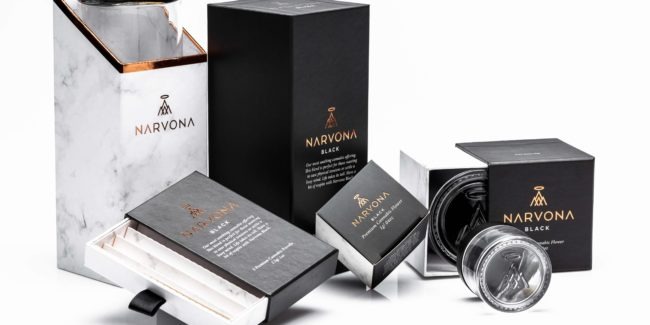Much ado has been made about the vaping health crisis. All across the nation, people are getting hospitalized for health issues related to using vaporizers. As of October 29, 2019, approximately 1,888 people have reported severe lung injury associated with the use of vaping products. The overwhelming majority of those affected have been those using THC cartridges.
So what’s going on? Is the vaping health crisis related to the use of legal cannabis? What are states doing to address this issue, and how will that affect the cannabis industry? Here are 4 things you need to know about the vaping health crisis.
#1) The Cause of Vaping Illness
What is causing the vaping health crisis? The short answer is that no one knows. Neither the CDC nor the FDA has been able to identify a definite cause of vaping illness, also known as EVALI (E-cigarette or Vaping Product Use Associated Lung Injury).
To get at the root cause of vaping illness, government labs across the country have started testing vaping products, additives, and tissue samples collected by those affected. According to test results gathered in the state of Wisconsin, more than half of those affected by vaping illness were using vape products containing THC oil.
Until the cause of vaping illness has been determined, the CDC recommends that people should not purchase vape products containing THC or modify their vaping equipment.
It should be noted that THC is most likely not the cause of vaping illness. Cannabis-based vape products have been around for more than a decade, and it is unlikely that they will go away any time soon. Similarly, tobacco-based vape products have been around for at least five years. If vaping itself were the problem, a health crisis would have most likely emerged years ago as opposed to just a few months ago.
While the CDC cannot find a single cause, several new vape liquid additives have emerged as the likely culprit, including propylene glycol (PG) and polyethylene glycol (PEG), Vitamin E acetate, and medium chain triglycerides (MCT oil). Recently, Vitamin E oil in vape cartridges has been a particularly popular additive in black market vape products, and many believe that the substances play a prominent role in the ongoing health crisis.
According to those same test results gathered in Wisconsin, two-thirds of the products gathered tested positive for Vitamin E oil. The reason why putting Vitamin E oil in vape cartridges is that it supposedly stretches the amount of THC oil.
#2) What’s Being Done About Vaping Illness
The wheels of government often move slowly, and in the absence of any meaningful guidance, states are taking it upon themselves to address the issue. Unfortunately, not every action taken by individual states is positive.
Massachusetts has moved to implement a three-month ban on all nicotine and cannabis-based vaping products. In Michigan, Gov. Gretchen Whitmer used her emergency powers to ban flavored nicotine products. Similarly, New York Gove. Andrew Cuomo banned flavored e-cigarette products. Oregon has placed a six-month ban on all flavored vaping products. Rhode Island health officials have passed emergency health regulations banning flavored vaping products, and Washington Gov. Jay Inslee has also issued an executive order to ban flavored nicotine and cannabis vaping products.
Despite these bans, the spread of vaping illness has continued unabated. The primary reason, as previously mentioned, is that most of these illnesses have been caused by illegal vape products. Consequently, banning legal vaping products have done very little to affect change.
On the other hand, some states have taken a more reasonable approach to the health crisis. Instead of banning flavored vaping products, Colorado has proposed to place a ban on the additives that are most likely behind the health crisis, including PEG, MCT Oil, and Vitamin E oil. For vape products that contain other additives, producers would be required to place a “Not approved by the FDA” warning label on it.
Only time will tell whether states will choose to go the Colorado-route in dealing with vaping illness, or whether they’ll the more clumsy approach of implementing a sweeping ban.
#3) The Effects of the Vaping Crisis and Vape Bans
How many people are affected by the vaping health crisis and the ensuing bans? Although it is difficult to say how many people use flavored vape products, according to Reuters approximately 10.8 million Americans (one in 20) use e-cigarettes. This does not include cannabis users, so the number is likely higher. Nevertheless, this still gives you a rough estimate of how many people use vapes and could potentially be affected by the health crisis.
There is also the question of the vaping industry itself. Aside from cannabis operators, producers of tobacco-based vape products have started to feel the economic pressure of the vaping health crisis. There are no official statistics surrounding the economic effect of vaping illness. However, several states have gathered some data regarding the crisis.
In Massachusetts, for example, the ban on flavored vape products have cost vaping stores around $8 million in lost sales. Though the ban has cost Massachusetts retailers millions of dollars, it has also helped retailers in surrounding states earn a little extra cash. Maine retailers have seen a boom in sales thanks to the ban in Massachusetts.
“Some are stocking up and buying multiple products,” Patricia Rosi, the CEO of Wellness Connection of Maine, told Marijuana Business Daily. “They come, they have some lunch – a lobster roll – buy some vape products and head back down.”
#4) What You Can Do About Vaping Illness
The vaping health crisis has caused growing anxiety among cannabis and tobacco vape enthusiasts. Many people are asking themselves, “Should I stop using vape products?” It has often been said that an ounce of prevention is worth a pound of cure, so if you are afraid of contracting vaping illness, then, by all means, take the necessary precautions. Likewise, if you choose to continue to use vape products, you should also take precautions.
When purchasing vape products, the first thing you should do is read the label. As previously mentioned, most states have simply banned flavored vape products and have not gone after the additives themselves.
For example, if you see that there is Vitamin E oil in your vape oil, don’t buy it. If the product doesn’t contain a list of ingredients, ask the retailer or manufacturer about its components. Never purchase black market vape cartridges.
On an individual level, people will need to do their due diligence to ensure that they don’t become ill. Most of that will boil down to purchasing their vape products to licensed retailers and avoiding the black market.
For lawmakers, the burden will be taking on the harmful additives that people put in their vapes and to crack down on sellers of illegal vapes. Naturally, the best solution would be for Congress to move towards legalizing cannabis nationwide, as much of the vape black market is fueled by cannabis users.
The vaping health crisis may seem confusing and frightening, but at the end of the day, stopping the spread of vaping illness is entirely within our hands.



